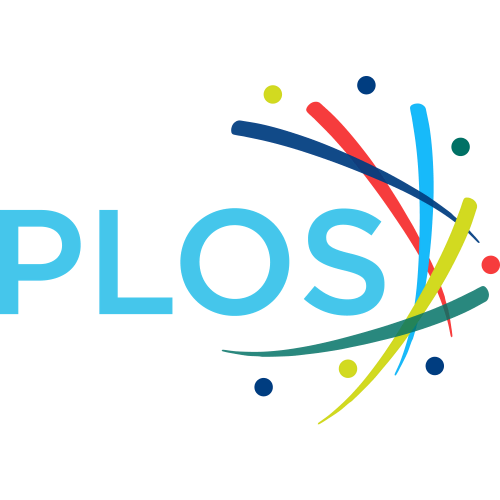Open Access


Vole abundance and reindeer carcasses determine breeding activity of Arctic foxes in low Arctic Yamal, Russia
Dorothee Ehrich
1
,
Maite Cerezo
1
,
Anna Y Rodnikova
2
,
Natalya A Sokolova
3, 4
,
Eva Fuglei
5
,
Victor G Shtro
3
,
Aleksandr A Sokolov
3, 4
4
Arctic Research Center of Yamal-Nenets Autonomous District, Salekhard, Russia
|
5
Norwegian Polar Institute, FRAM Centre, Tromsø, Norway
|
Publication type: Journal Article
Publication date: 2017-09-16
PubMed ID:
28915877
General Environmental Science
Ecology, Evolution, Behavior and Systematics
Abstract
High latitude ecosystems are at present changing rapidly under the influence of climate warming, and specialized Arctic species at the southern margin of the Arctic may be particularly affected. The Arctic fox (Vulpes lagopus), a small mammalian predator endemic to northern tundra areas, is able to exploit different resources in the context of varying tundra ecosystems. Although generally widespread, it is critically endangered in subarctic Fennoscandia, where a fading out of the characteristic lemming cycles and competition with abundant red foxes have been identified as main threats. We studied an Arctic fox population at the Erkuta Tundra Monitoring site in low Arctic Yamal (Russia) during 10 years in order to determine which resources support the breeding activity in this population. In the study area, lemmings have been rare during the last 15 years and red foxes are nearly absent, creating an interesting contrast to the situation in Fennoscandia. Arctic fox was breeding in nine of the 10 years of the study. The number of active dens was on average 2.6 (range 0–6) per 100 km2 and increased with small rodent abundance. It was also higher after winters with many reindeer carcasses, which occurred when mortality was unusually high due to icy pastures following rain-on-snow events. Average litter size was 5.2 (SD = 2.1). Scat dissection suggested that small rodents (mostly Microtus spp.) were the most important prey category. Prey remains observed at dens show that birds, notably waterfowl, were also an important resource in summer. The Arctic fox in southern Yamal, which is part of a species-rich low Arctic food web, seems at present able to cope with a state shift of the small rodent community from high amplitude cyclicity with lemming dominated peaks, to a vole community with low amplitude fluctuations. The estimated breeding parameters characterized the population as intermediate between the lemming fox and the coastal fox ecotype. Only continued ecosystem-based monitoring will reveal their fate in a changing tundra ecosystem.
Found
Nothing found, try to update filter.
Found
Nothing found, try to update filter.
Top-30
Journals
|
1
2
3
4
|
|
|
Polar Biology
4 publications, 18.18%
|
|
|
Global Change Biology
3 publications, 13.64%
|
|
|
Cryosphere
1 publication, 4.55%
|
|
|
Arctic Science
1 publication, 4.55%
|
|
|
Canadian Journal of Zoology
1 publication, 4.55%
|
|
|
PeerJ
1 publication, 4.55%
|
|
|
European Journal of Wildlife Research
1 publication, 4.55%
|
|
|
Scientific Reports
1 publication, 4.55%
|
|
|
Mammalian Biology
1 publication, 4.55%
|
|
|
Environmental Science and Pollution Research
1 publication, 4.55%
|
|
|
PLoS Biology
1 publication, 4.55%
|
|
|
Ecosphere
1 publication, 4.55%
|
|
|
Journal of Mammalogy
1 publication, 4.55%
|
|
|
Ecology and Evolution
1 publication, 4.55%
|
|
|
Earth's Future
1 publication, 4.55%
|
|
|
Ecology
1 publication, 4.55%
|
|
|
Advances in Experimental Medicine and Biology
1 publication, 4.55%
|
|
|
1
2
3
4
|
Publishers
|
1
2
3
4
5
6
7
8
9
|
|
|
Springer Nature
9 publications, 40.91%
|
|
|
Wiley
6 publications, 27.27%
|
|
|
Canadian Science Publishing
2 publications, 9.09%
|
|
|
Copernicus
1 publication, 4.55%
|
|
|
PeerJ
1 publication, 4.55%
|
|
|
Public Library of Science (PLoS)
1 publication, 4.55%
|
|
|
Oxford University Press
1 publication, 4.55%
|
|
|
American Geophysical Union
1 publication, 4.55%
|
|
|
1
2
3
4
5
6
7
8
9
|
- We do not take into account publications without a DOI.
- Statistics recalculated weekly.
Are you a researcher?
Create a profile to get free access to personal recommendations for colleagues and new articles.
Metrics
22
Total citations:
22
Citations from 2024:
5
(22%)
Cite this
GOST |
RIS |
BibTex
Cite this
GOST
Copy
Ehrich D. et al. Vole abundance and reindeer carcasses determine breeding activity of Arctic foxes in low Arctic Yamal, Russia // BMC Ecology. 2017. Vol. 17. No. 1. 32
GOST all authors (up to 50)
Copy
Ehrich D., Cerezo M., Rodnikova A. Y., Sokolova N. A., Fuglei E., Shtro V. G., Sokolov A. A. Vole abundance and reindeer carcasses determine breeding activity of Arctic foxes in low Arctic Yamal, Russia // BMC Ecology. 2017. Vol. 17. No. 1. 32
Cite this
RIS
Copy
TY - JOUR
DO - 10.1186/s12898-017-0142-z
UR - https://doi.org/10.1186/s12898-017-0142-z
TI - Vole abundance and reindeer carcasses determine breeding activity of Arctic foxes in low Arctic Yamal, Russia
T2 - BMC Ecology
AU - Ehrich, Dorothee
AU - Cerezo, Maite
AU - Rodnikova, Anna Y
AU - Sokolova, Natalya A
AU - Fuglei, Eva
AU - Shtro, Victor G
AU - Sokolov, Aleksandr A
PY - 2017
DA - 2017/09/16
PB - Springer Nature
IS - 1
VL - 17
PMID - 28915877
SN - 1472-6785
ER -
Cite this
BibTex (up to 50 authors)
Copy
@article{2017_Ehrich,
author = {Dorothee Ehrich and Maite Cerezo and Anna Y Rodnikova and Natalya A Sokolova and Eva Fuglei and Victor G Shtro and Aleksandr A Sokolov},
title = {Vole abundance and reindeer carcasses determine breeding activity of Arctic foxes in low Arctic Yamal, Russia},
journal = {BMC Ecology},
year = {2017},
volume = {17},
publisher = {Springer Nature},
month = {sep},
url = {https://doi.org/10.1186/s12898-017-0142-z},
number = {1},
pages = {32},
doi = {10.1186/s12898-017-0142-z}
}
Profiles











